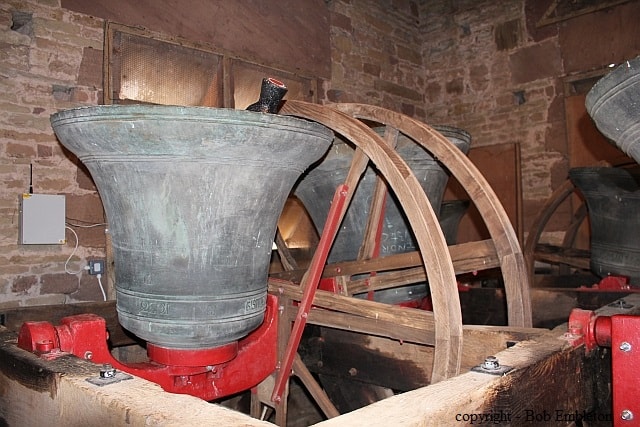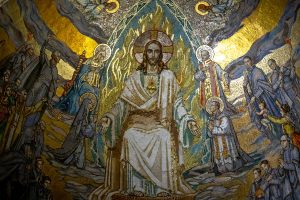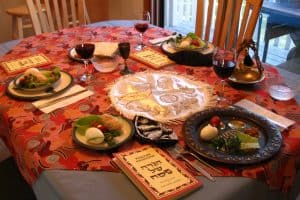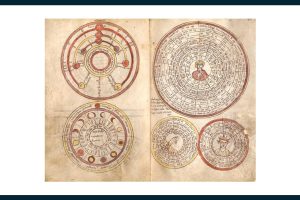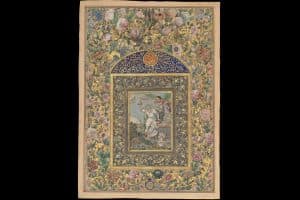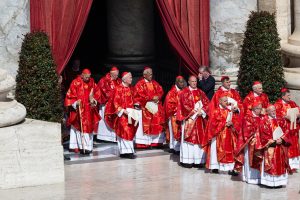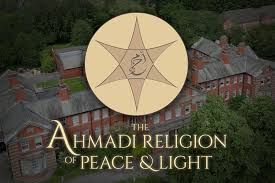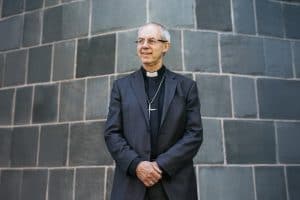By Trevor Barnes
Bellringing has been associated with churches and Christian worship for almost 1,500 years, with many churches across Britain in particular built to include a tower with bells. Over time ringing church bells in complex but ordered patterns has developed into an art, a form of worship and a hobby for thousands.
Where do church bells come from?
Bells are among the oldest musical instruments in the world and were probably first cast in China more than 5,000 years ago. The Hebrew Bible or Old Testament records that they were used by the ancient Israelites in the construction of the Ark of the Covenant and records show that they were incorporated into the worship of Osiris by the ancient Egyptians. They are widely used to this day in Buddhist, Hindu and Shinto devotions.
In the Christian tradition the ringing of church bells is thought to date from the fifth century when Paulinus of Nola, a Roman consul and Christian convert in southern Italy, introduced the practice into the Christian Church. In 604 Pope Sabinian sanctioned the use of bells to announce the start of Christian services and by the early Middle Ages they had become common features of Christian monasteries, churches and cathedrals.
How are bells rung?
Change-ringing is the art and science of ringing bells in arranged sequences under the instructions of a conductor or lead bell-ringer. The result is a melodious and complex sound that stops short of a conventional tune. Change-ringing can be practised in any situation where there is a ring of three bells or more. Worldwide there are reckoned to be more than 6,000 of these of which 5,748 are in Britain. They are sometimes to be found in secular buildings but in most cases they are in churches and cathedrals.
The possible permutations of any ring or “peal” of bells are calculated as factorials – or the product of a number and all the numbers below it. So three bells would produce 3x2x1 permutations, four bells 4x3x2x1 and so on. A ring of 10 bells (Westminster Abbey in London, for example) would therefore produce 3,628,800 possible permutations, which would take more than three months to ring.
In 1963 at Taylor’s Bell Foundry in Loughborough all possible permutations on eight bells were rung (40,320 in all). The eight ringers completed the marathon in a time of 17 hours and 58 minutes setting a record for the most number of changes rung continuously on tower bells.
How do bells make their sound?
Bells are made of a copper-tin alloy producing an optimum combination of strength and rigidity combined with elasticity and resonance.
Individual bells are tuned to a dominant note which is sounded when the clapper strikes the interior. The strike note, however, produces a series of complex vibrations which, according to the shape and thickness of the metal, in turn produces a series of tones or harmonics known as “partials”. It is the combination of the strike note (whose frequency is comparatively weak) and the stronger combined partials that gives rise to the bell’s distinctive sound.
What are the different ways bells can be rung?
The simplest permutation of sounds from a ring of bells is called a round, a repeated series of notes descending from the highest to the lowest.
Change-ringing, which developed in England in the 17th century, built on this and developed ever more inventive sequences known as methods. Variously titled Plain Bob, Plain Hunt, Grandsire Doubles, Triples and Stedman Cinques (and many more) these have become part of the universal language of campanology.
This means that bell-ringers from Manchester to Melbourne and Coventry to Canberra can turn up anywhere and, compliant with current safeguarding measures, be assured of a warm welcome within the bell-ringing fraternity worldwide.
Why do Christians ring bells?
In the words of Jeremy Pratt, head bell-ringer at Westminster Abbey or, to give him his official title, conductor of the abbey company of ringers, church bells “are the loudest and most public, outward-facing voice of the Christian Church. When people hear them, they know something is happening.”
The bells ring at Easter and at Christmas. They ring for celebration and mourning, for weddings and funerals and coronations. The church bells every Sunday morning remind the people who aren’t there that the church is.
They also ring in times of national crisis or celebration. The proposed “Big Ben Brexit bongs” on 31 January 2020, to signal Britain’s withdrawal from the European Union, was mired in controversy as this would mark a highly divisive moment in history.
The Central Council of Church Bell Ringers, approached for comment, remained aloof from the debate, maintaining that while there were historical precedents for such a proposal (the centenary of the Great War armistice, say, or other great occasions of church and state) it could not endorse bell-ringing for political reasons. Individual churches, it added, had discretion to ring bells on such occasions but these would be on a “case by case” basis.
A neutral by-product of the debate, however, was to focus attention on the enormous symbolic significance of church bells in the nation’s collective consciousness and on the often unspoken affection in which they are held by churchgoers and non-churchgoers alike.
As Mary Bone, secretary of the Central Council of Church Bell Ringers, puts it: “They are part of the soundscape of the country and we would all be the poorer if they disappeared.”
Church bells facts
- The composer George Frideric Handel, on one of his first visits to London, called England “the ringing isle” because he had heard church bells ringing wherever he went.
- Church bells have also been used for secular purposes such as commemorating important civic events, signalling market days and, particularly in walled or gated cities, sounding the curfew.
- Before their installation in a church tower or belfry the bells are usually blessed by an ordained priest in a solemn service of consecration. In some branches of the Catholic Church this takes the form of a “baptism” during which the bells are anointed with holy water.
- Bells were used at the time of Moses to denote high priestly office. Exodus 28:33 describes how Aaron’s priestly robes were decorated with golden bells.
- During the Second World War Winston Churchill invoked the Defence of the Realm Act of 1914 to ban the country’s church bells from ringing – unless to announce invasion by enemy troops.
- From about the ninth century began the custom of engraving bells with inscriptions. The name of the bell’s donor was often inscribed – or that of the saint to whom the bell was being dedicated.
- Although the Protestant reformers of the 16th century destroyed church statues and paintings deemed to be idolatrous, church bells (which later Puritans opposed) largely escaped destruction. Similarly they were spared from being melted down during the Second World War even though metal for armaments was in acute demand.
- The Tsar Bell in Moscow is the largest church bell in existence and weighs 180 tons. Cast in 1655, it has, however, never been rung.
- The two largest church bells in Britain are Great Paul (16½ tons) at St Paul’s Cathedral, London and Great George (14½ tons) at the Anglican cathedral in Liverpool.
- A ring of 10 bells is capable of producing more than 3.6 million different permutations.
Trevor Barnes is a writer, journalist and broadcaster who regularly works on BBC TV and radio shows on religion

